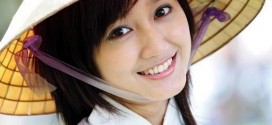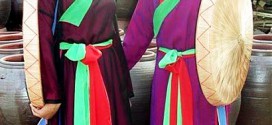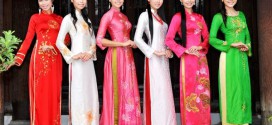The costume of women in South Vietnam has gone through many stages of development, but still preserves its distinctive and unique imprints of the traditional culture.
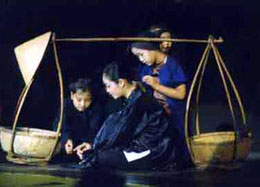
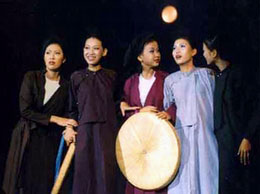
Initially, the women’s costume in the North of Vietnam was ao tu than (four-piece blouse) with a bodice, a skirt and a headscarf of the ancient Vietnamese women. When the country was separated into Dang Trong (the South) and Dang Ngoai (the North), the Lords of Dang Trong instituted a cultural reform, including a costume reform to differentiate local people’s costumes from those in Dang Ngoai.
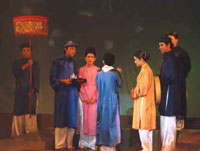
In the 18th century, the southern women wore long five-flap shirts with black loose trousers, with their hair in a high bun and they walked barefooted both at work and in the town. And this five-piece shirt was considered as the forerunner to the current ao dai of southern women, which was preserved due to the development of the sericulture and fabric weaving. As there was a class division in the feudal society, common women wore long black shirts made from coarse materials, whereas upper class women wore shirts made from smooth and cloths with “main colors” such as yellow, blue, red and purple. They usually wore long shirts in blue or violet, their hair in a bun, curved shoes and flat balm hat with fringes. Besides, dark hues were considered more suitable for women living in wet areas.
At that time, the wedding gown comprised a halter-neck and a long-sleeved shirt, which were redesigned from ao mo ba mo bay (shirt of several flaps), to be suitable to the sultry weather.
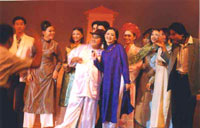
In the 19th century and early 20th century, due to the influence of the French culture, the ao dai was harmoniously designed between the traditional culture and the western style. It was made tighter, clinging to the body and more colorful, from thin materials and worn with loose white trousers. In the 1970s, the south was the vanguard in renovating the costume. Southern designers made it cling to the body with narrowed flaps, especially they made use of the Raglan shoulder to avoid creases and give the dress a softer, more flowing appearance.
Then, the ao dai became the traditional dress of the Vietnamese women. It helps wearers look charming and attractive, elegant and romantic. Moreover, it also graces the lissomness and gentleness of the women.
Nowadays, the Ao Dai is still the much-feted costume of Vietnamese women at wedding parties, festivals and offices. Hence, many famous fashion designers such as Minh Hanh, Si Hoang and Lien Huong design the Ao Dai in different styles with unique patterns, which harmoniously combine the beauty of traditional style and the modernity of the West.
Besides the traditional dress, the ao ba ba (loose-fitting blouse), which entered Vietnam from Chinese traders and was redesigned several times, has become the distinctive costume of southern women . Initially, the ao ba ba was black and tailored with pockets and splitting flaps at the hip. It was worn along with a bandana, suitable to the life of women in watery areas. Later, designers made it tighter with the Raglan shoulder, and in light and bright hues that make the ao ba ba more feminine and beautiful.
 Vietnamese Culture and Tradition
Vietnamese Culture and Tradition 
